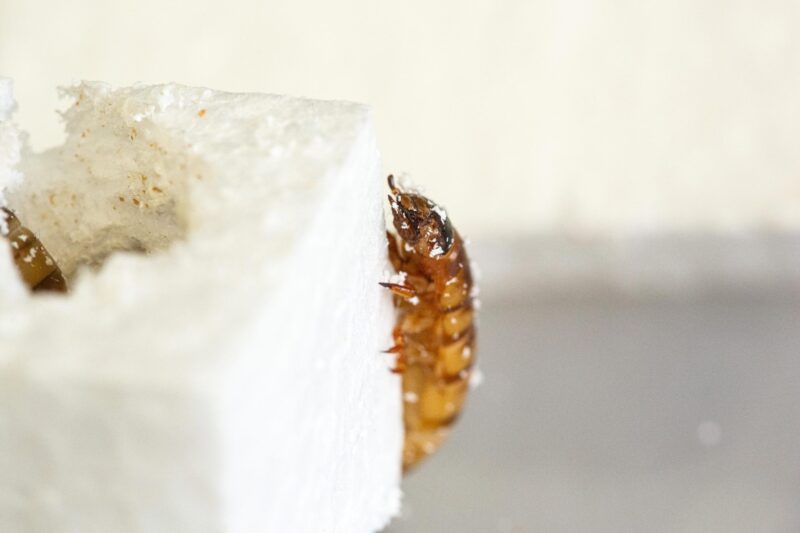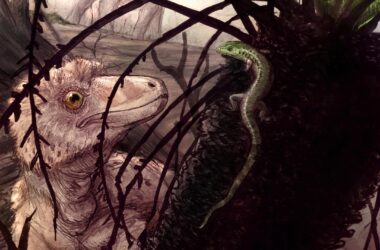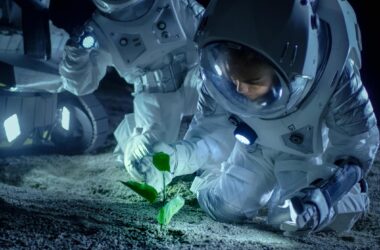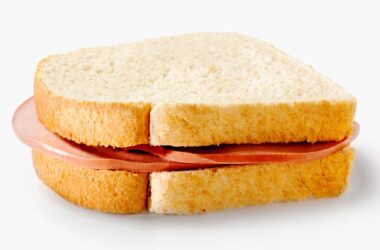
Le commun Zophobas morio peut manger à travers le polystyrène. Crédit : Université de Queensland
Selon l’American Chemistry Council, en 2018 aux États-Unis, 27,0 millions de tonnes de plastique ont fini dans les décharges, contre seulement 3,1 millions de tonnes qui ont été recyclées. Dans le monde entier, les chiffres sont tout aussi mauvais, avec seulement 9 % de plastique recyclé selon un récent rapport de l’Organisation de coopération et de développement économiques (OCDE).
Les statistiques sont encore pires pour certains types de plastique. Par exemple, sur les 80 000 tonnes de styromousse (polystyrene) containers generated in the United States, a negligible amount (less than 5,000 tons) was recycled.
One of the big problems is that most plastic isn’t easily recyclable and recycled plastic can be significantly lower in value due to a loss of quality.
Now, researchers at the University of Queensland have found a species of worm with an appetite for polystyrene could be the key to plastic recycling on a mass scale.
Scientists discovered the common Zophobas morio ‘superworm’ can eat through polystyrene, thanks to a bacterial enzyme in their gut.
Dr. Chris Rinke and his team from UQ’s School of Chemistry and Molecular Biosciences fed superworms different diets over a three-week period, with some given polystyrene foam, some bran and others put on a fasting diet.
“We found the superworms fed a diet of just polystyrene not only survived, but even had marginal weight gains,” Dr. Rinke said. “This suggests the worms can derive energy from the polystyrene, most likely with the help of their gut microbes.”
The researchers used a technique called metagenomics to find several encoded enzymes with the ability to degrade polystyrene and styrene. The long-term goal is to engineer enzymes to degrade plastic waste in recycling plants through mechanical shredding, followed by enzymatic biodegradation.
“Superworms are like mini recycling plants, shredding the polystyrene with their mouths and then feeding it to the bacteria in their gut,” Dr. Rinke said.
“The breakdown products from this reaction can then be used by other microbes to create high-value compounds such as bioplastics.”
It’s hoped this bio-upcycling will incentivize plastic waste recycling and reduce landfill.
Co-author of the research, PhD candidate Jiarui Sun, said they aim to grow the gut bacteria in the lab and further test its ability to degrade polystyrene. “We can then look into how we can upscale this process to a level required for an entire recycling plant,” Ms. Sun said.
Dr. Rinke said there are many opportunities for the biodegradation of plastic waste.
“Our team is very excited to push the science to make it happen,” he said.
This research has been published in Microbial Genomics.
Reference: “Insights into plastic biodegradation: community composition and functional capabilities of the superworm (Zophobas morio) microbiome in styrofoam feeding trials” by Jiarui Sun, Apoorva Prabhu, Samuel T. N. Aroney and Christian Rinke, 9 June 2022, Microbial Genomics.
DOI: 10.1099/mgen.0.000842



